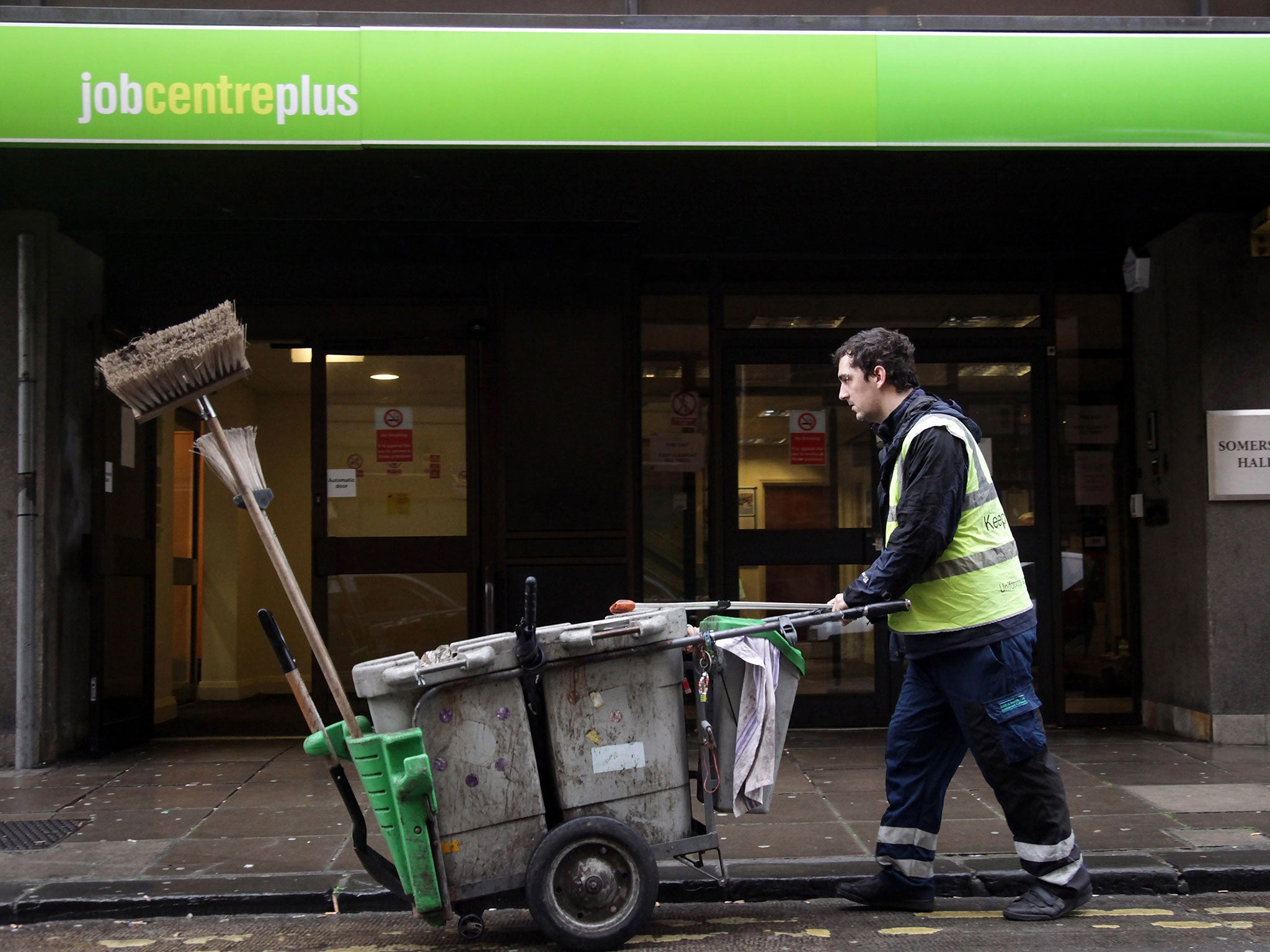The 'jobs gap' closes: Proportion of Britons in work finally returns to pre-recession levels
Recovery is not uniform across Britain, however

The “jobs gap” since the start of the recession has finally closed as Britain’s recovery reaches an important milestone, according to a study to be published today.
The proportion of people employed in the UK, at 73 per cent, is back to where it was before the downturn in 2008, said the Resolution Foundation. The think tank, which has often been critical of the Government, hailed the findings as “very good news”.
Although ministers have trumpeted the creation of more than two million private sector jobs since the Coalition was formed, critics have said the growth was due largely to a rising population. That argument is now weaker.
However, the new study found significant variation between the regions. London is forging ahead at the top of the “jobs growth” league, with a 2.3 per cent rise in its employment rate since 2008. More surprisingly, the north-east is doing well with a rise of almost one per cent. So is the east of England.
The foundation, which works to improve the lives of people on low and middle incomes, expressed concern that the jobs recovery is unevenly spread across the UK. Although all parts of the country are now heading in the right direction, seven of the 12 regions are yet to close their “jobs gap”. Northern Ireland, Wales, the north-west and the west Midlands have suffered the “double whammy” of lower than average employment rates at the start of the downturn and “poor recoveries” compared to other regions.
The south-east has the single biggest “jobs gap”, with 65,000 fewer posts than before the recession, when its performance was strong. But it still enjoys the second highest employment rate after the east of England. Yorkshire and Humber, the east Midlands as well as the east, the north-east and London, have a higher proportion of people in work than in 2008.
Official figures could show the end of the “jobs gap” tomorrow, when the monthly employment statistics are published.
Laura Gardiner, senior research and policy analyst at the foundation, said: “This week should mark another milestone in the UK’s labour market recovery, with its-six year jobs gap finally closing. The strong employment growth in the UK as a whole is very good news and has far exceeded expectations, particularly as it has been broadly spread across the country over the last year or two.
“But some areas are clearly doing better than others. The experiences of Northern Ireland and Wales, where employment levels remain below average and growth rates lag behind those recorded elsewhere, look very different to those enjoyed in the high-employment, high-jobs-growth areas such as the east of England and the east Midlands.”
She added: “As well as increasing the rate of employment growth in regions that are lagging behind, we need to ensure that the jobs driving this employment recovery are of a high quality and not short term, unstable and low skilled.”
Yesterday, the Office for Budget Responsibility, the independent fiscal watchdog, warned that despite the rising number of people in work, income tax revenue could be lower than expected this year.
Robert Chote, the OBR's chairman, told the BBC: “The Chancellor of the Exchequer gets more bang for his buck if wages and salaries rise as a result of people's earnings going up than if employment goes up. If earnings go up you are taking more people into higher income tax brackets whereas if employment is going up you are perhaps bringing in more people at the bottom.”
Q and A: What is the jobs gap?
Q: Is the closing of the jobs gap good news?
A: Yes. For the UK as a whole, the proportion of people in work (73 per cent) is back to where it was before the recession began in 2008.
Q: Where’s the catch?
A: Seven of the 12 regions, including Wales and Northern Ireland, are still not back to where they were in 2008.
Q: Does it mean higher wages?
A: No. The TUC calculates that workers are experiencing the longest, deepest decline in real earnings since the 1860s, with an eight per cent fall since 2007.
Q: What sort of jobs are being created?
A: The number of part-time workers who could not find a full-time job has risen from 689,000 (9.4 per cent) to 1.3m (16.5 per cent) since 2008.
A TUC survey found that 77 per cent of the net job creation since 2010 has been in industries where the average wage is less than £7.95 an hour, such as retail, waitressing and residential care.
The ranks of the self-employed has risen from 3.8m (13 per cent of the workforce) to 4.5m (14.8 per cent) since 2008. Some people have been forced into low earning self-employment after losing their jobs.
Q: Are the new jobs mainly in the private sector?
A: Yes. The Office for Budget Responsibility forecasts that 3.1m private sector jobs will be created between 2011-2019, but that 1.1m public sector posts will be lost over the same period.
Subscribe to Independent Premium to bookmark this article
Want to bookmark your favourite articles and stories to read or reference later? Start your Independent Premium subscription today.

Join our commenting forum
Join thought-provoking conversations, follow other Independent readers and see their replies